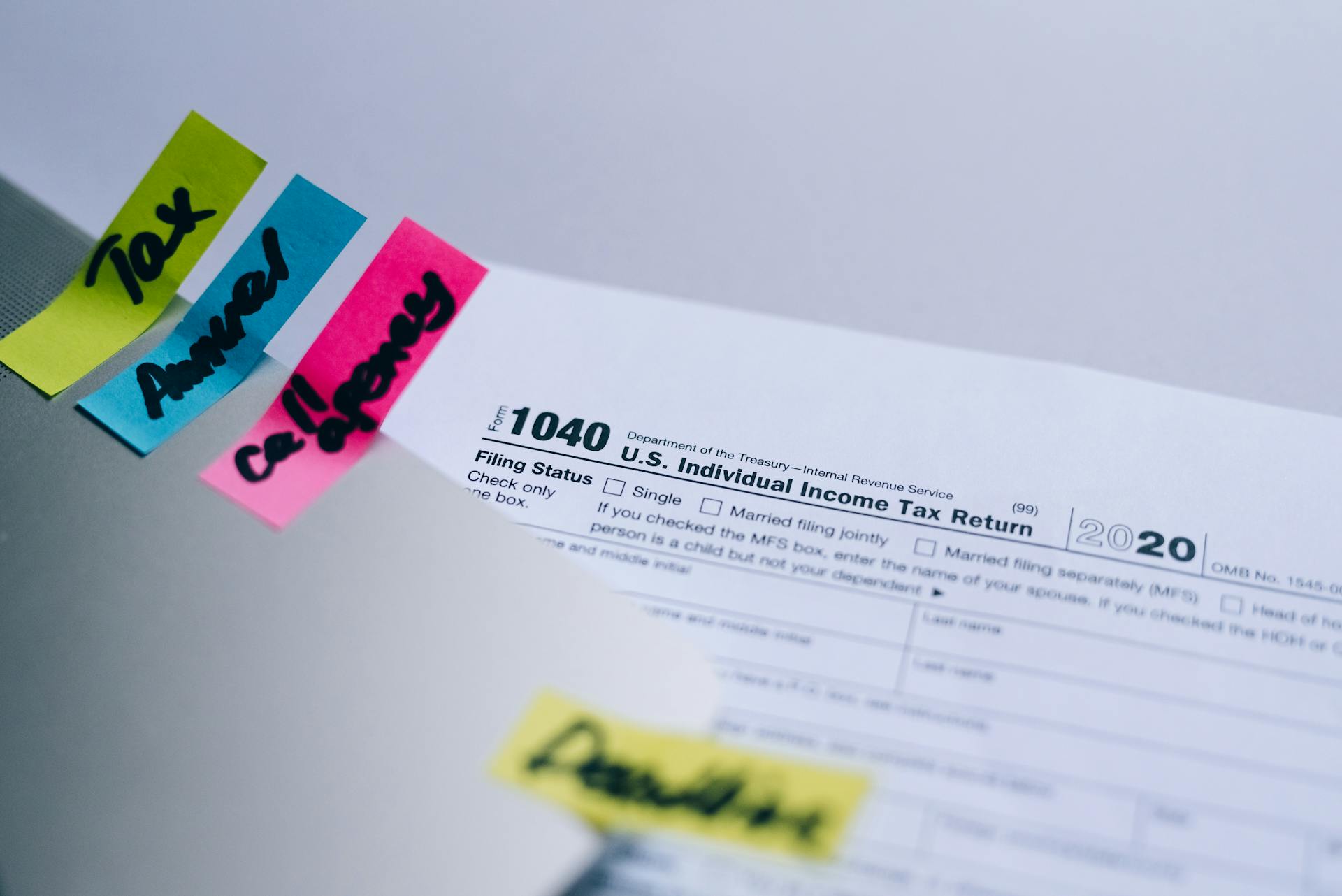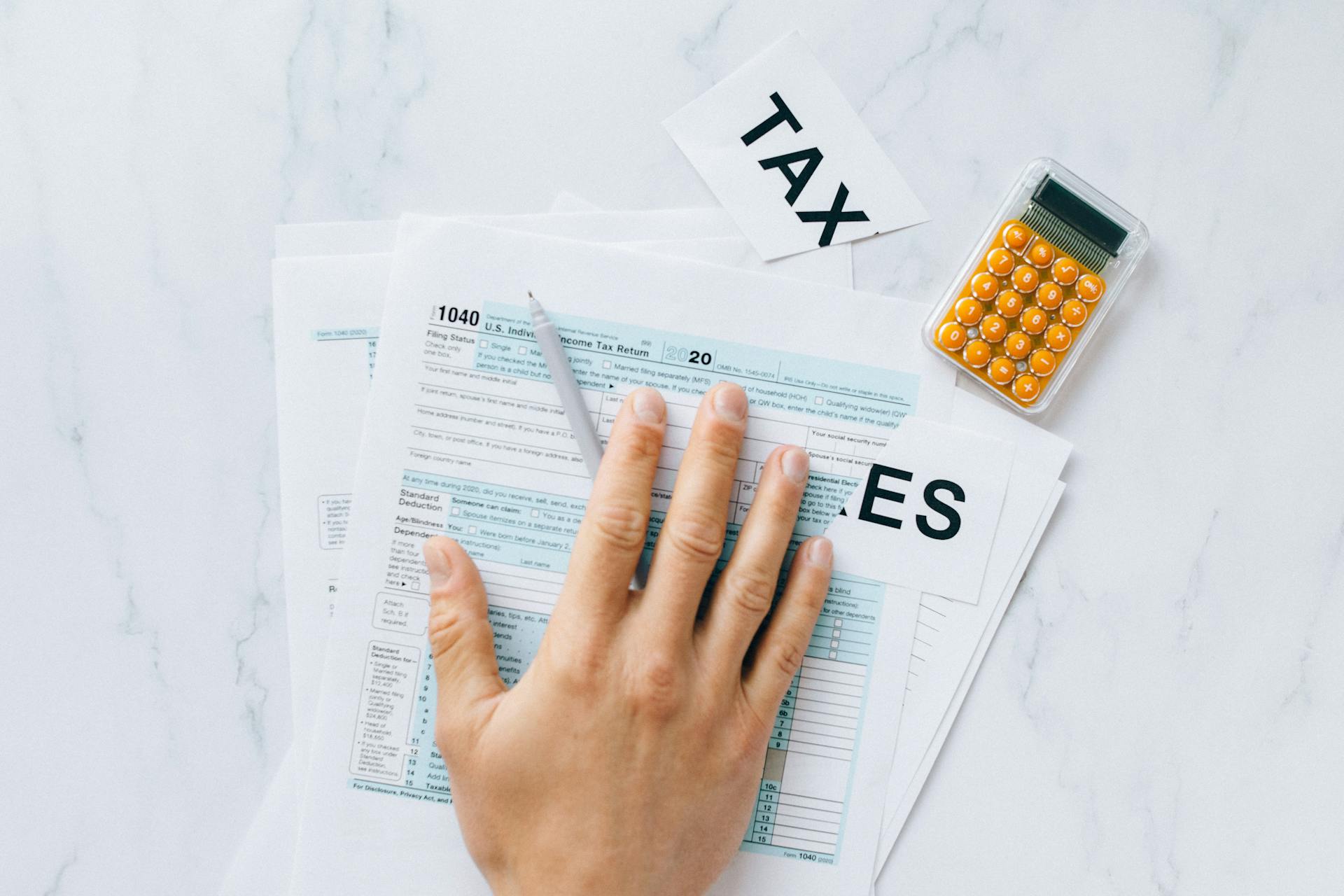
Tax debt forgiveness can be a lifesaver for individuals and businesses overwhelmed by financial obligations. You may be eligible for tax debt forgiveness if you meet specific requirements.
The IRS offers several programs for tax debt forgiveness, including the Offer in Compromise (OIC) program. This program allows taxpayers to settle their tax debt for less than the full amount owed.
To qualify for the OIC program, you must demonstrate that paying the full amount would cause you financial hardship. The IRS uses a formula to determine if you qualify, which takes into account your income, expenses, and assets.
If you're struggling to pay your taxes, don't wait – explore your options for tax debt forgiveness today.
Suggestion: Irs Debt Forgiveness Program 2023
Eligibility
You're struggling with tax debt and wondering if you're eligible for forgiveness. The IRS has specific criteria to determine eligibility, and it's essential to understand these requirements before applying.
To be eligible for tax debt forgiveness, you must have filed all required tax returns and made all required estimated payments.
On a similar theme: What Is a Class B Share
The IRS considers your ability to pay, income, expenses, and asset equity when reviewing your application. This means they'll assess your financial situation to determine if you can afford to pay your tax debt in full.
You're eligible to apply for an offer in compromise if you meet certain conditions, such as not being in an open bankruptcy proceeding or having a valid extension for a current year return.
Here's a summary of the eligibility criteria:
- Filed all required tax returns and made all required estimated payments.
- Aren't in an open bankruptcy proceeding.
- Have a valid extension for a current year return (if applying for the current year).
- Are an employer and made tax deposits for the current and past 2 quarters before you apply.
You can also use the Offer in Compromise Pre-Qualifier Tool to confirm your eligibility and prepare a preliminary proposal. This tool will help you determine if you meet the necessary criteria.
If you're struggling with tax debt, it's essential to explore all your options and get help from the IRS. The Offer in Compromise program may be a viable solution, but it's not for everyone. Be sure to check the qualifications of any tax professional you hire to help you file an offer.
Additional reading: What Stores Offer Credit Cards
Applying for Forgiveness
You can apply for forgiveness through the IRS's penalty abatement program, which waives penalties for taxpayers who made an error in filing an income tax return or paying on time.
To apply, you can submit a written petition, fill out Form 843, or request abatement verbally with an IRS representative.
There are three ways to request penalty abatement: written petition, IRS Form 843, and verbally.
You can also seek one-time forgiveness by using your Online Account to make offer in compromise payments or check if you're eligible to submit an OIC.
To be eligible for an offer in compromise, you must meet certain criteria, including demonstrating financial hardship or doubt as to liability, and being in compliance with tax obligations.
Here are the eligibility criteria for an offer in compromise:
Payment and Settlement
If you're struggling to pay your taxes, you're not alone. The IRS offers various payment and settlement options to help you manage your tax debt.
You can pay your tax debt in various ways, including by bank account (Direct Pay), debit or credit card, or your online account.
To qualify for an offer in compromise, you'll need to demonstrate that you can't pay your full tax liability or that doing so would create a financial hardship. The IRS will review your income, expenses, and asset equity to determine if you qualify.
The IRS considers an offer in compromise when the amount you offer represents the most they can expect to collect within a reasonable period of time. You can submit an initial payment of 20% of the total offer amount with your application, or make periodic payments while the IRS reviews your offer.
If you can't pay your taxes in full, you can pay what you can now to help avoid interest and penalties. Then, you can choose from options like an installment agreement or an offer in compromise.
Here are some key things to keep in mind when considering an installment agreement:
- You'll need to pay a setup fee
- The IRS may file a Notice of Federal Tax Lien, which can damage your credit score
- You'll need to make regular payments to avoid revocation of the agreement
The IRS also offers a payment plan option that allows you to pay your tax debt in monthly installments. You can apply for a payment plan online or by mail.
Here are the IRS's payment options:
- Bank account (Direct Pay)
- Debit or credit card
- Your online account
- Business tax payment (EFTPS)
- Payment plan
- Tax debt help
- Penalties
- Interest
- Tax withholding
- Foreign electronic payments
- User fees
By understanding your options and taking action, you can find a solution to your tax debt and get back on track.
Understanding the Process
If you submit an offer to settle your tax debt with the IRS, they'll review it and let you know in writing if they can process it or not. If they can, you'll receive a letter with an estimated date of contact and might be asked to provide additional information.
The IRS will apply your non-refundable payments and fees directly to your tax liability, and you can even designate payments to a specific tax year and debt. They may also file a notice of federal tax lien, suspend other collection activities, and extend your legal assessment and collection period.
Here's what happens during the evaluation process:
- Your non-refundable payments and fees are applied to the tax liability.
- IRS may file a notice of federal tax lien.
- IRS suspends other collection activities.
- Your legal assessment and collection period is extended.
- You make all required payments per your offer.
- You don't have to make payments on an existing installment agreement.
- Your offer is automatically accepted if the IRS doesn’t make a determination within two years of the IRS receipt date.
Currently Non-Collectible Status
If you're struggling to pay your taxes, the IRS may place you in Currently Non-Collectible Status. This means they won't actively try to collect the money you owe.
However, this status doesn't mean your debt is forgiven. The interest and penalties will continue to accrue, and the statute of limitations will reset.
For more insights, see: Title Loans without Seeing the Car
The IRS may require you to file a financial statement, showing your current income and expenses. They'll use this information to determine if and when they can begin collecting from you again.
Here are some key things to know about Currently Non-Collectible Status:
- The IRS will not actively try to collect the money you owe.
- Interest and penalties will continue to accrue.
- The statute of limitations will reset.
- You may be required to file a financial statement.
Keep in mind that being in Currently Non-Collectible Status is not a one-time solution. The IRS will revisit your case periodically to determine if you're able to start making payments again.
Understand the Process
If the IRS can't process your offer, they'll notify you in writing. If they can, you'll receive a letter with an estimated date of contact and possibly a request for more information.
Your non-refundable payments and fees are applied directly to your tax liability. You can even designate payments to a specific tax year and debt.
The IRS may file a notice of federal tax lien during this process. This can affect your credit score and make it harder to get loans or credit in the future.
For another approach, see: Who Will Refinance My Mortgage with Late Payments

Your legal assessment and collection period is extended while the IRS evaluates your offer. This gives you more time to make payments and settle your debt.
You'll need to make all required payments per your offer to keep the process moving. If you're already on an installment agreement, you won't have to make payments on that while your offer is being processed.
If the IRS doesn't make a determination within two years of receiving your offer, it's automatically accepted. However, this doesn't include any appeal period, so be sure to follow up if you don't hear back.
Here's a summary of what happens while your offer is being evaluated:
- Your non-refundable payments and fees are applied to the tax liability.
- The IRS may file a notice of federal tax lien.
- The IRS suspends other collection activities.
- Your legal assessment and collection period is extended.
- You make all required payments per your offer.
- You don't have to make payments on an existing installment agreement.
- Your offer is automatically accepted if the IRS doesn’t make a determination within two years of the IRS receipt date.
Getting Help and Resources
You can get in-person help at an IRS Taxpayer Assistance Center or at a Low Income Taxpayer Clinic.
For professional help with your debt, look for a reputable nonprofit credit counseling agency or a qualified professional. They can offer objective advice without ulterior motives.
Related reading: How Much Does a Cosigner Help on Car Loans
Credit counselors are amongst the few professionals who can answer questions and offer advice on tax debt, budgeting, credit reviews, and managing other debt. You can schedule an appointment to speak to a counselor about your financial challenges.
Bench can help you get your books up-to-date and resolve outstanding bookkeeping issues, which can even lower your total tax debt. Their team of historical bookkeepers generates accurate financial records to help you resolve your tax debt.
As a Bench client, you'll have access to their network of vetted tax resolution partners to help you navigate negotiating your balance or setting up a monthly tax payment plan.
Intriguing read: Hhgregg Synchrony Financial
Alternatives and Options
If you're struggling to pay your tax debt, there are several alternatives and options to consider.
Paying part of your balance can help avoid interest and penalties, so try to pay what you can now.
The IRS offers various relief options, including installment agreements, offer in compromise, and currently not-collectible status, which can provide a one- to two-year delay in collection activities.

Loans and credit cards can be used to cover tax debt, but consider the drawbacks, such as high interest rates and fees.
A Home Equity Line of Credit (HELOC) can be an option if you have equity in your home and good credit, but your home will be collateral for the debt.
A 401(k) loan allows you to draw from your retirement savings, but it must be paid back with interest and fees.
Credit cards can be one of the most expensive methods of paying for anything, including tax debt, with average interest rates over 19% APR.
If you don't qualify for one-time forgiveness, the IRS offers other ways to help you pay down and settle your tax bill through its Fresh Start program.
There are four main forgiveness programs accessible to taxpayers: installment agreement, offer in compromise, currently not-collectible status, and penalty abatement.
Here are the four main forgiveness programs in more detail:
If you're still unsure about how to proceed, consider seeking help from a tax professional or consulting service.
Penalties and Interest

The IRS may offer penalty abatement for delinquent bills if you can demonstrate a special hardship. This means the agency may remove certain penalties and stop adding new charges.
To qualify for penalty abatement, you must have filed the same return type for the past three tax years prior to the tax year in which you received a penalty, and have paid or arranged to pay any tax due.
Only 12% of penalties for failure to file and failure to pay were abated in 2019, suggesting many taxpayers don't know about this program.
You must have filed all of your tax returns, paid your outstanding balance, or made an installment arrangement with the IRS, and have no prior penalties in the past three years to qualify for penalty abatement.
Even if a penalty is forgiven, interest may not be. The IRS starts charging interest on the day the penalty is due and will continue until your account is fully paid.
You might enjoy: Icici Recurring Deposit Interest Rates

Here's a summary of the requirements for penalty abatement:
- Filed the same return type for the past three tax years
- Filed all currently required returns or filed an extension of time to file
- Paid or arranged to pay any tax due
Interest abatement is more limited and rarely approved, so it's best to pay your debt before applying for relief to avoid increasing penalties and interest.
Additional reading: High Interest Savings Account Definition
Scam Indicators
Tax debt forgiveness can be a complex and overwhelming process, but being aware of scam indicators can help you avoid falling prey to unscrupulous companies.
Marketing to you directly via letters or email is a common sign of a scam. Be cautious of companies that reach out to you first, as this is often a tactic to get you to part with your money.
Guaranteeing results without gathering information about your debt is a major red flag. Legitimate companies will take the time to understand your situation before making promises.
Claiming they can eliminate or radically reduce penalties and interest is also a warning sign. While tax debt relief companies can help, they can't magically make your debt disappear.
Discover more: Mortgage Companies That Will Refinance While in Chapter 13
Demanding payment up-front is a clear indication of a scam. Legitimate companies will work with you to find a payment plan that suits your needs.
Here are some common scam indicators to look out for:
- Marketing to you directly via letters or email
- Guaranteeing results without gathering information about your debt
- Claiming they can eliminate or radically reduce penalties and interest
- Demanding payment up-front
- Failure to ask why you’re behind with the IRS or to discuss your current financial situation
- Delaying results by asking for the same documents repeatedly or by other means
- Telling you (after charging money) that your debt relief window has closed, or the IRS rejected your application
Frequently Asked Questions
How can I get out of paying tax debt?
Consider an Offer in Compromise if paying the full tax debt would cause significant financial hardship, allowing you to settle for a reduced amount
Featured Images: pexels.com


